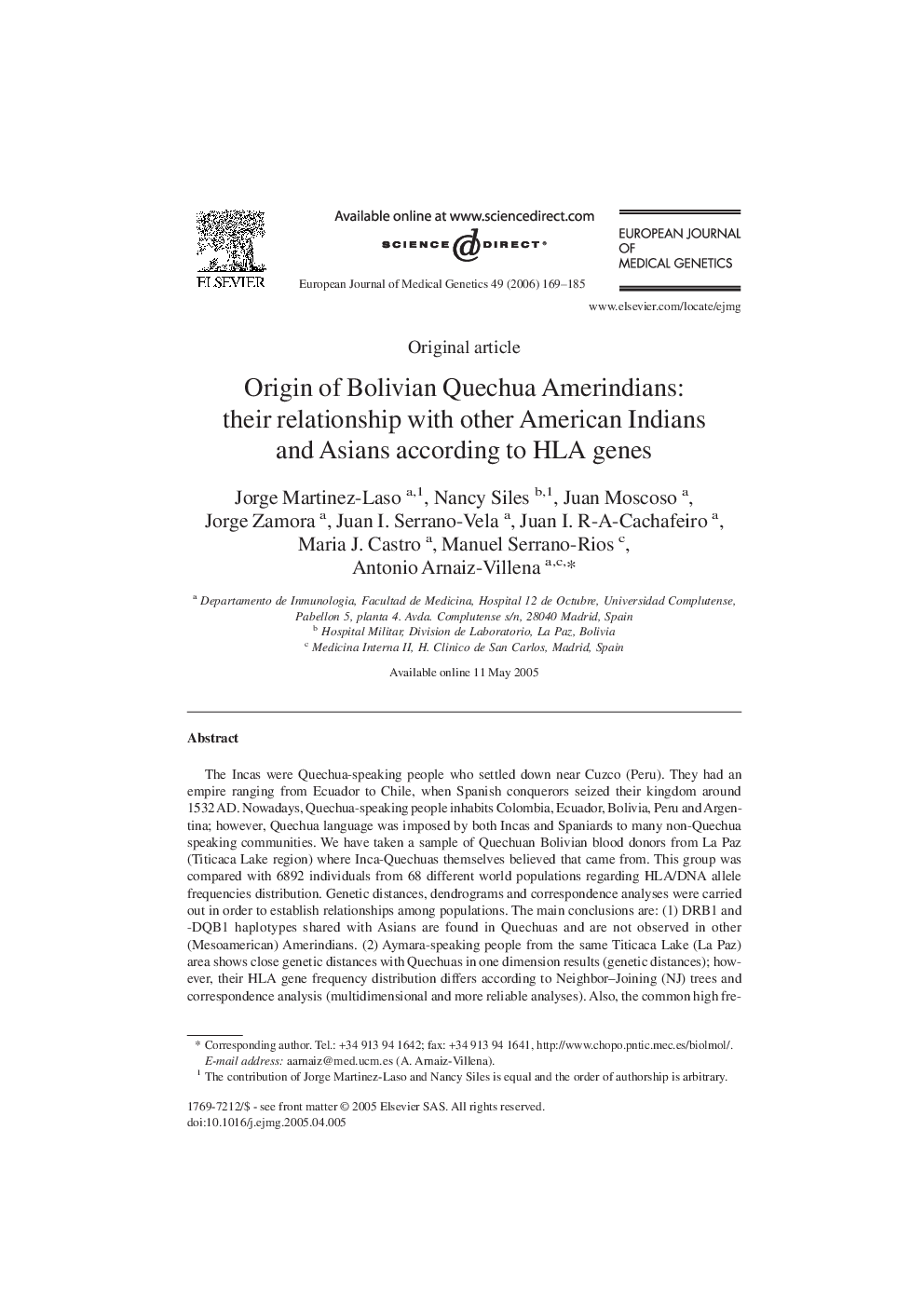| Article ID | Journal | Published Year | Pages | File Type |
|---|---|---|---|---|
| 2814285 | European Journal of Medical Genetics | 2006 | 17 Pages |
The Incas were Quechua-speaking people who settled down near Cuzco (Peru). They had an empire ranging from Ecuador to Chile, when Spanish conquerors seized their kingdom around 1532 AD. Nowadays, Quechua-speaking people inhabits Colombia, Ecuador, Bolivia, Peru and Argentina; however, Quechua language was imposed by both Incas and Spaniards to many non-Quechua speaking communities. We have taken a sample of Quechuan Bolivian blood donors from La Paz (Titicaca Lake region) where Inca-Quechuas themselves believed that came from. This group was compared with 6892 individuals from 68 different world populations regarding HLA/DNA allele frequencies distribution. Genetic distances, dendrograms and correspondence analyses were carried out in order to establish relationships among populations. The main conclusions are: (1) DRB1 and -DQB1 haplotypes shared with Asians are found in Quechuas and are not observed in other (Mesoamerican) Amerindians. (2) Aymara-speaking people from the same Titicaca Lake (La Paz) area shows close genetic distances with Quechuas in one dimension results (genetic distances); however, their HLA gene frequency distribution differs according to Neighbor–Joining (NJ) trees and correspondence analysis (multidimensional and more reliable analyses). Also, the common high frequency Asian and Athabascan HLA-DRB1*0901 allele is found in Quechuas in a significant frequency. Quechuas are clearly included within the Amerindian group.
